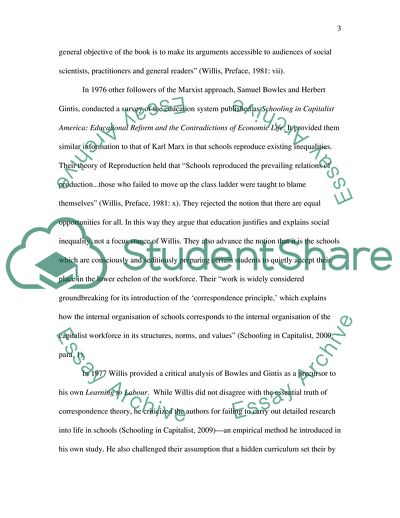Cite this document
(Analysis of Learning to Labour: How Working Class Kids Get Working Book Report/Review, n.d.)
Analysis of Learning to Labour: How Working Class Kids Get Working Book Report/Review. https://studentshare.org/social-science/1740722-critical-book-review-on-willis-p-1980-learning-to-labour-how-working-class-kids-get-working-class-jobs
Analysis of Learning to Labour: How Working Class Kids Get Working Book Report/Review. https://studentshare.org/social-science/1740722-critical-book-review-on-willis-p-1980-learning-to-labour-how-working-class-kids-get-working-class-jobs
(Analysis of Learning to Labour: How Working Class Kids Get Working Book Report/Review)
Analysis of Learning to Labour: How Working Class Kids Get Working Book Report/Review. https://studentshare.org/social-science/1740722-critical-book-review-on-willis-p-1980-learning-to-labour-how-working-class-kids-get-working-class-jobs.
Analysis of Learning to Labour: How Working Class Kids Get Working Book Report/Review. https://studentshare.org/social-science/1740722-critical-book-review-on-willis-p-1980-learning-to-labour-how-working-class-kids-get-working-class-jobs.
“Analysis of Learning to Labour: How Working Class Kids Get Working Book Report/Review”. https://studentshare.org/social-science/1740722-critical-book-review-on-willis-p-1980-learning-to-labour-how-working-class-kids-get-working-class-jobs.


